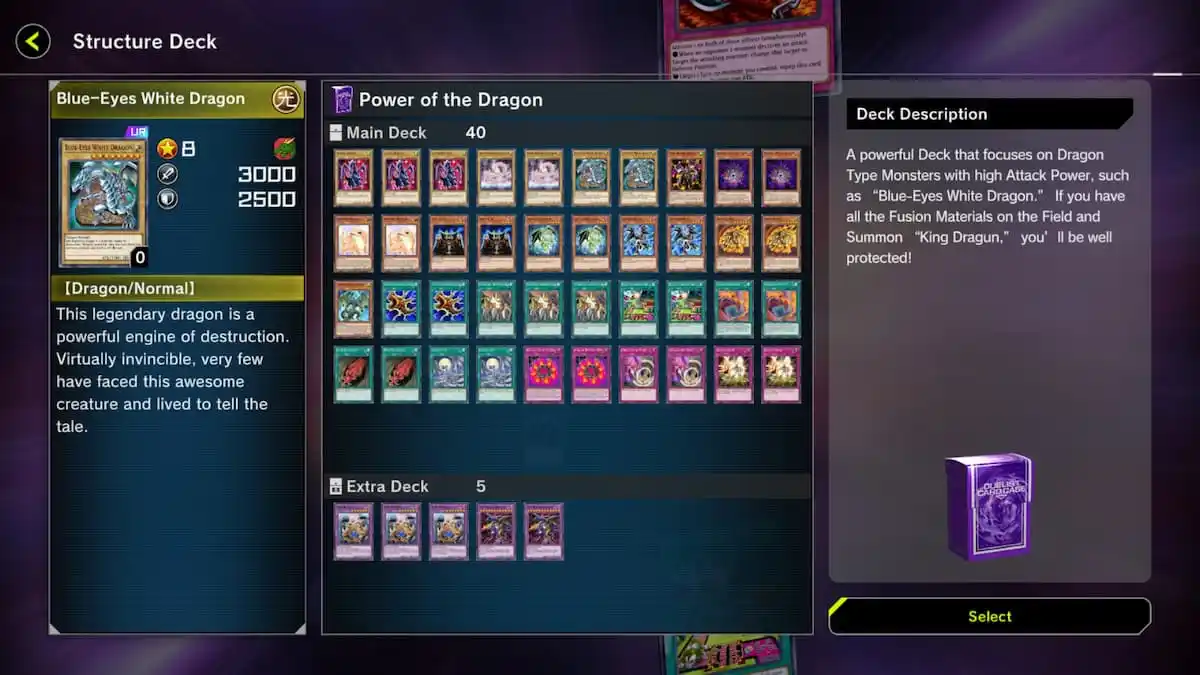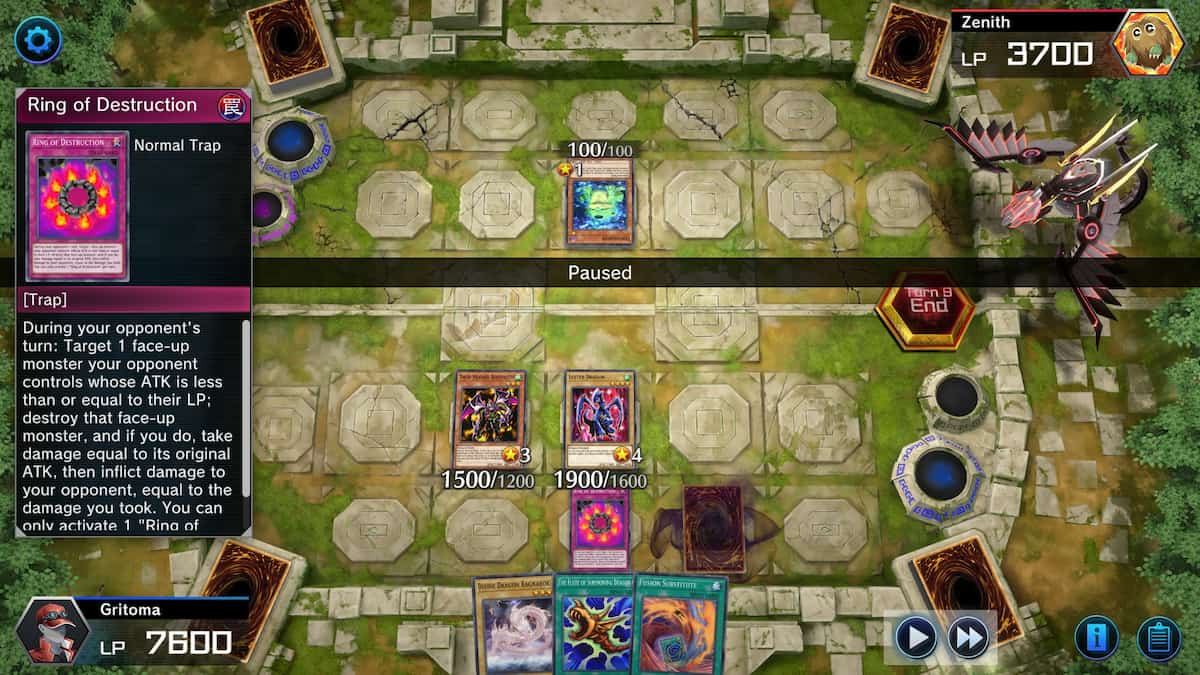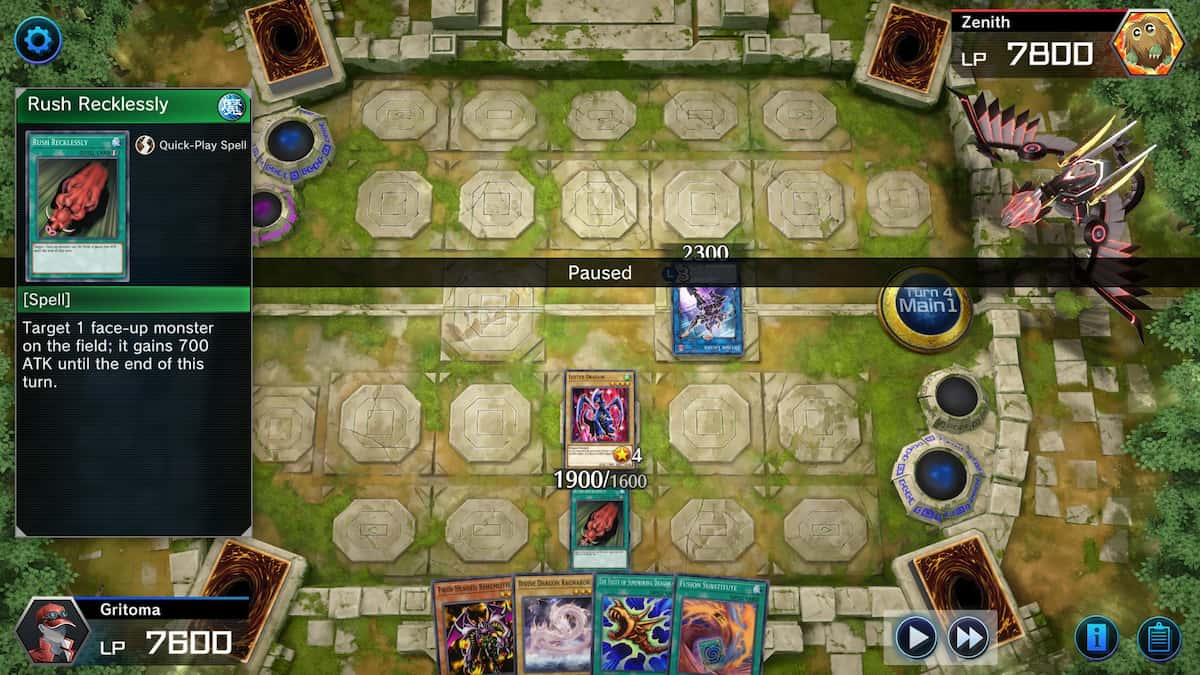With the influx of players to the blossoming Yu-Gi-Oh Master Duel comes plenty of newcomers attracted to the spectacle and unfamiliar with the game’s rather rigid meta. When this crowd is met with three packs of “structure decks” at the start of the game — each with vastly different playstyles and bearing minimal descriptions or explanations — they’re likely to feel unsure how best to proceed. Fortunately, the Power of the Dragon deck best caters to this mechanically new clientele.
Strengths: The “Power” of the Dragon(s)

Even those unfamiliar with the ins and outs of Yu-Gi-Oh will recognize the ubiquity of Blue-Eyes White Dragon, and coincidentally therein lies the deck’s biggest strength — its base monster pool. Power of the Dragon features the beefiest standard monsters of the three structure decks, with the likes of Strong Wind Dragon and Luster Dragon providing instantaneous medium attack power (alternatively referred to as ATK) with which to quickly build a competent field, all without relying too heavily upon complex fusions or links. This deck prefers to start second, allowing the strength of its initial roster to attack first and overwhelm the weaker, fusion-based monsters likely to be summoned early by the other starter decks.
Weaknesses: Strength in (low) numbers
The moderate strength of these standard dragons is also the deck’s biggest drawback: while the dragons at the player’s disposal are powerful enough to bully most fusion-based cards, their middling ATK numbers tend to falter once opponents further set up and develop their field. For example, if an opponent running Link Generation manages to chain their lowly Link Streamers and Data Tokens into the much more powerful, 2300 ATK Decode Talker, the now-outmatched, 1900 ATK Luster Dragons would find themselves unable to hit through the opposing monster and would destroy themselves in the process, dealing 400 life points worth of damage to their owner.
And while Power of the Dragon features stronger boss monsters that the player can summon in retaliation, such as Five-Headed Dragon, their summoning sequences tend to be much more difficult and resource-intensive to complete and could be quickly dispatched by an opponent’s trap or spell cards unless a Lord of D or King Dragun is summoned in tandem.
Problem-solving: The “panic buttons”

So, how exactly is Power of the Dragon expected to play from behind? Ideally, the deck works best if the player can clear their opponent’s field often enough to let their dragons gradually plug away at their opponent’s life points, destroying weaker monsters or outright attacking directly. To make this process easier, Power of the Dragon features several utility cards that can be used at the first sign of danger, much like one would use a panic button.
- Back To Square One: instantly destroy one opposing monster
- Ring of Destruction: preemptively deny an opponent from spawning a monster (at the cost of some of both players’ life points)
- Threatening Roar: deny an opponent’s monsters from attacking for one turn
Winning fights with Rush Recklessly

In particularly tense situations in which an opponent’s monster is about to attack, Rush Recklessly can be used to temporarily boost a dragon’s ATK by 700, leading opposing monsters into unwinnable fights. Considering the previous bout between Decode Talker and Luster Dragon, and disregarding alternative buffs to ATK, Luster Dragon’s ATK would grow to 2600 for one turn, allowing it to destroy Decode Talker and deal the 300 remaining ATK to the opponent’s life points.
Related: Yu-Gi-Oh! Master Duel adds a missing piece to the successful franchise – Hands-on impressions
Growth
After enough time spent getting comfortable with Power of the Dragon, players may start to notice their dragons being increasingly overwhelmed in ATK by custom-built decks and unlockable cards. As a structure deck, however, Power of the Dragon is designed to be foundational, and adapt well to new additions of cards. For example, if a player decides to include the necessary resources for ritual summoning, they could include the more powerful Blue-Eyes Chaos MAX Dragon to upgrade upon the already formidable Blue-Eyes White Dragon. Alternatively, the Power of the Dragon deck is designed to transition well into the multifaceted Dragonmaid deck.







Published: Feb 6, 2022 01:23 pm